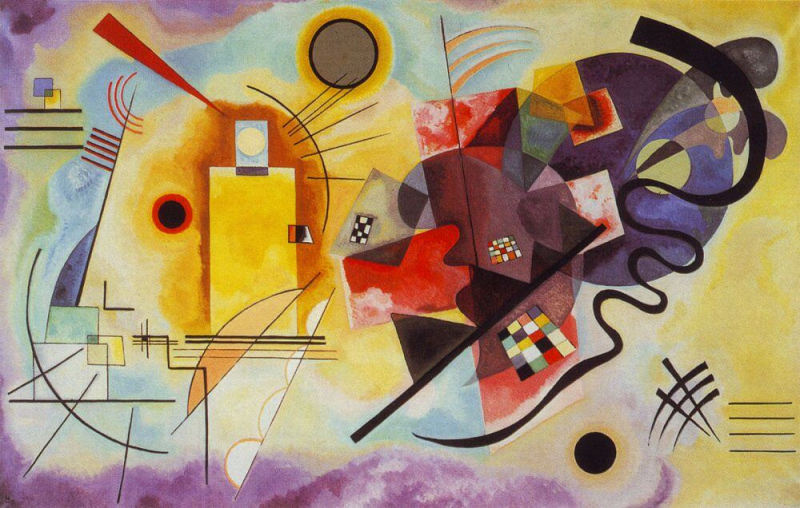Yellow-Red-Blue
Suprematism was a Russian art trend that concentrated on depicting fundamental geometric patterns in a limited color palette. Kandinsky taught at the Bauhaus, a modernist art school in Germany that had a significant influence on twentieth-century art, from 1922 to 1933.
Kandinsky's Yellow-Red-Blue, painted during his stay at the Bauhaus, can be viewed as a symphony he made by combining his style with Bauhaus techniques and Suprematist ideals. It is separated into two sections, one with geometric shapes and bright colors on the left and the other with abstract shapes and dark hues on the right. Kandinsky has primarily employed the three primary hues, Yellow, Red, and Blue, as the title suggests.
The light and dark in the painting have been nicely contrasted, with the left side of the canvas communicating a plethora of light yellows, blues, and reds and the right side of the canvas displaying its darker colors. Kandinsky's amazing use of color here demonstrates his distinct artistic vision with synesthesia, with each shade of color playing on the viewer's emotions.
Year: 1925
Style: Geometric Abstraction
Location: Georges Pompidou Center, Paris, France








